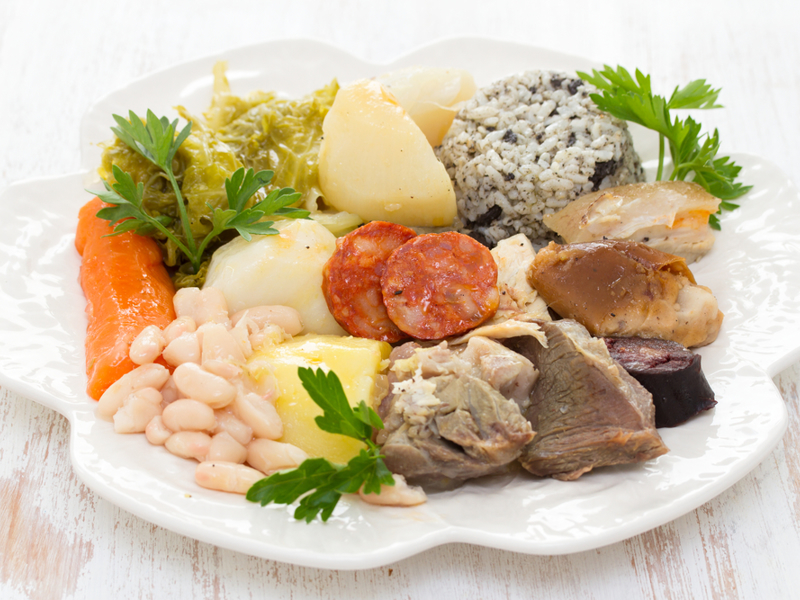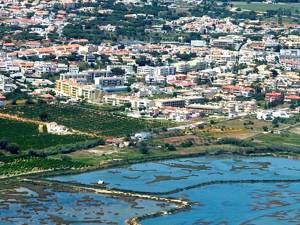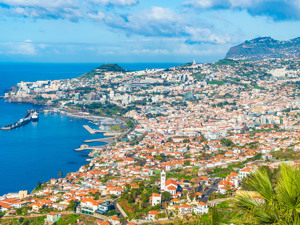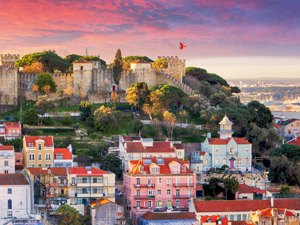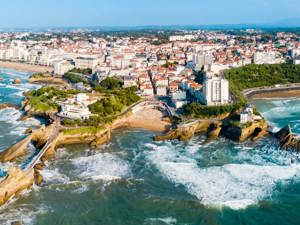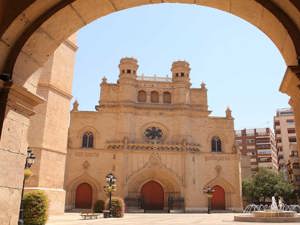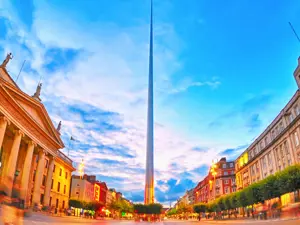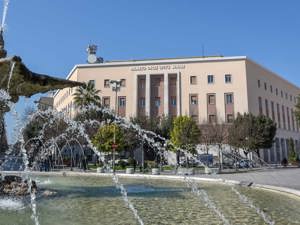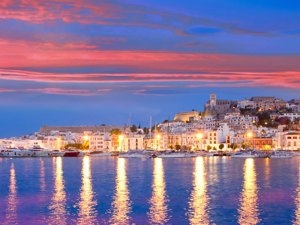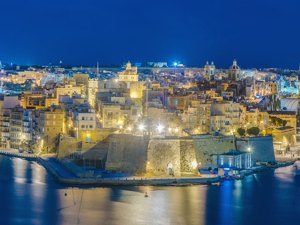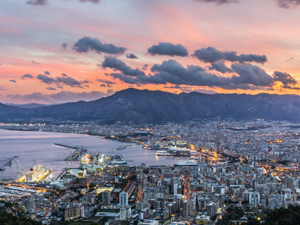The city that having given its name to the entire nation
Porto is situated in the north of Portugal, in the oldest and most productive region of the country. It is Portugal’s second city in terms of size but the first with regard to history and traditions, having given its name to the entire nation. This splendid city, situated on the banks of the River Douro, is a successful combination of old and new, with a splendid old town centre, which has been declared a UNESCO World Heritage Site, and modern masterpieces of architecture such as the House of Music and the bridges that unite the banks of the Douro.

Porto. Copyright © Sisterscom.com / Shutterstock
Avenida dos Aliado
A stroll through the streets of the city is an enjoyable experience. The main street is Avenida dos Aliados, a wide nineteenth-century avenue filled with traditional coffee houses, taverns, old stationery shops, book stores and shops selling local products.
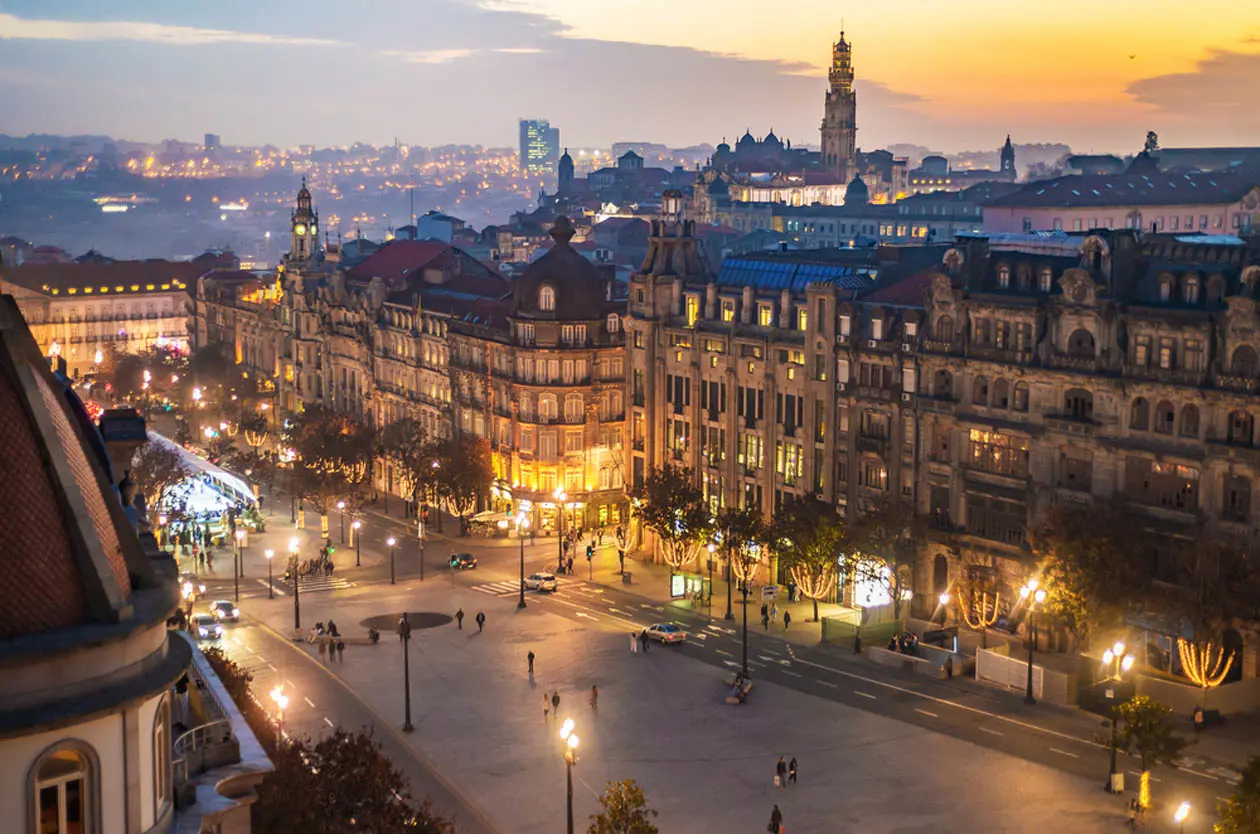
Avenida dos Aliado, Porto. Copyright © Sisterscom.com / Shutterstock
Ribeira
A unique place is the Ribeira, the old area of the historic centre that skirts the river, which is characterised by Medieval alleyways and a square of the same name wonderfully situated overlooking the banks of the Douro.
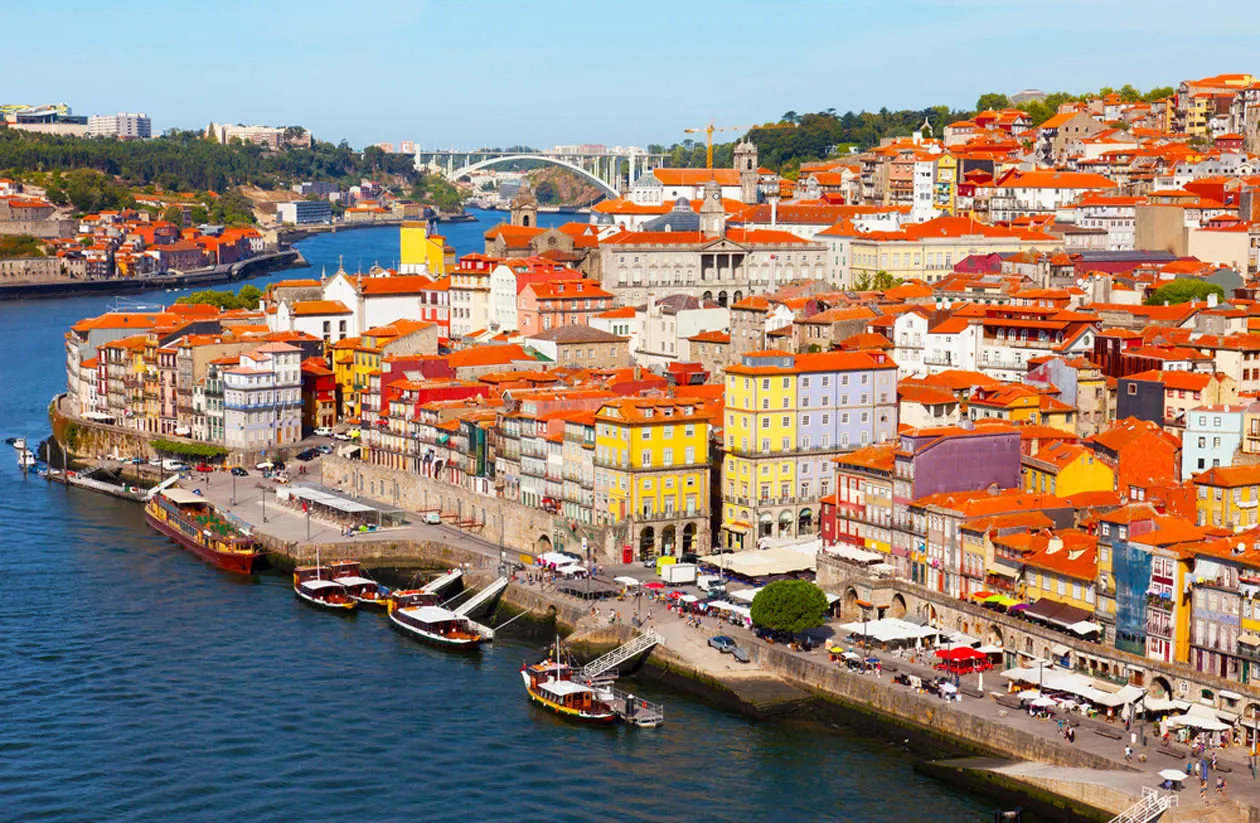
Ribeira, Porto. Copyright © Sisterscom.com / Shutterstock

Romanesque “Porto Cathedral” (Sé do Porto), Porto. Copyright © Sisterscom.com / Shutterstock
Historic buildings
Nearby is the “Torre dos Clérigos”, a tower from the XVIII century and a genuine icon of the city; the climb up its 240 steps is well worth while just to enjoy the panoramic and truly exceptional view of Porto.
Dominating the scene below is the Romanesque “Porto Cathedral” (Sé do Porto), which appears like a fortress and was built between the XII and XIII centuries during the period of dominance of the Moors.
Among the many historic buildings worth a visit are the Church of St. Francis and the Stock Exchange building with its unique Moorish style interior.
The bridges in Porto
The slow-flowing River Douro traverses the city; its banks are connected by some six different bridges. Two of most interesting are the “Ponte de Arrabida”, a well-used modern structure, and the historical “Ponte de Dom Luis I”, built on two levels by the Belgian engineer Téophile Seyrig. Another important bridge in Porto is the railway bridge known as “Maria Pia” designed by Eiffel.

Dom Luis I Bridge, Porto. Copyright © Sisterscom.com / Shutterstock
The famous Port wine
The city of Porto is best known for the production of the famous Port wine, a fortified wine and emblem of the country, which is drunk throughout the world. You shouldn’t leave Porto without taking a tour of its wineries. There are many in the city, some unknown, others very famous, but all offer the opportunity to try some excellent wine. If you have some time, take a trip to the surrounding countryside and visit the Douro Valley, which is dotted with vineyards and terraces where excellent DOC wines are produced.
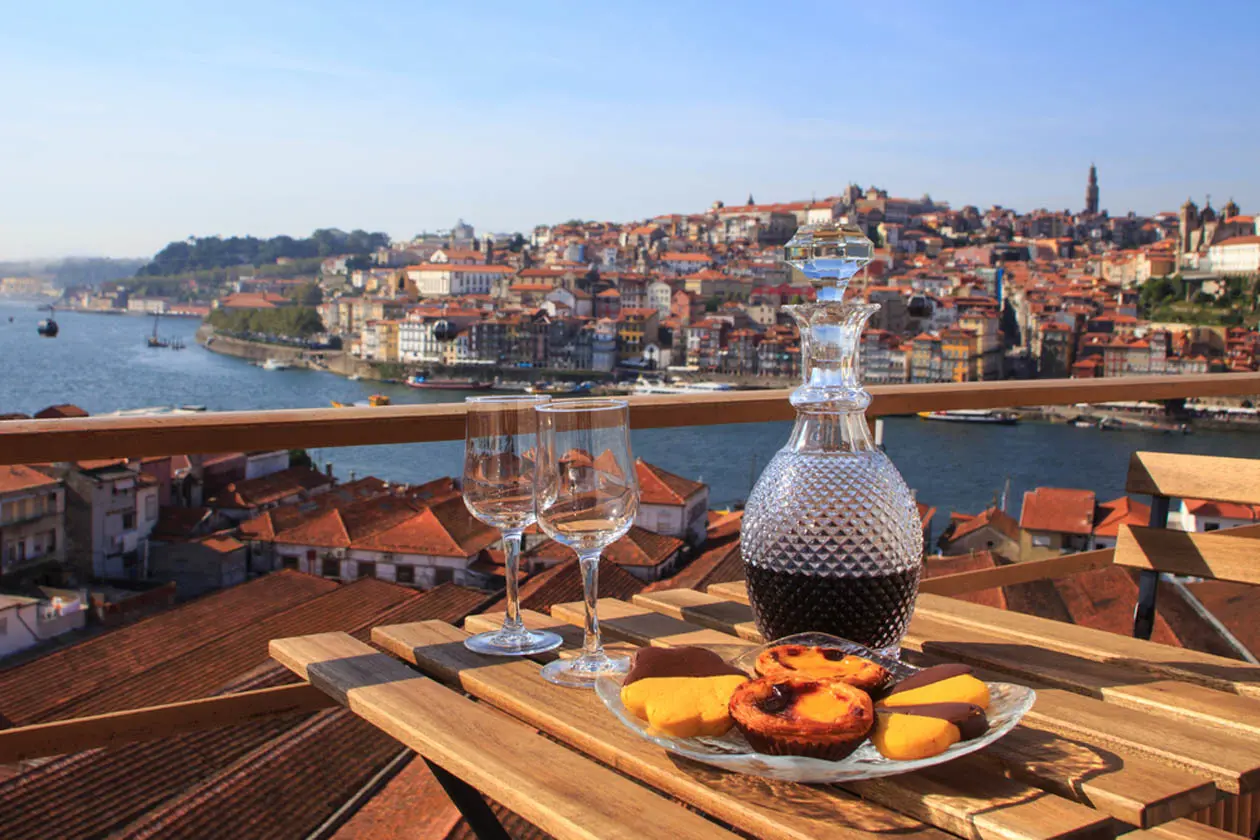
The Port wine, Porto. Copyright © Sisterscom.com / Shutterstock
Portuguese cuisine
The “king“ of Portuguese cuisine is fish cooked on the grill or prepared in soups in the traditional copper pot called cataplana. To taste cozido à portuguesa, a boiled meat of various kinds, with vegetables. Among the many desserts, do not miss the pastel de nata, a delicious cream puff to be savored with a Port or a Madeira, liqueur wines known all over the world.
Near Porto
In addition to Porto, some of the other picturesque cities in the northern regions of Portugal include Braga, famous for its churches, the striking Medieval city Guimarães, which was declared a UNESCO World Heritage Site, and Bragança, with its old centre enclosed by an intact circle of XII century walls with eighteen towers. A newly-created fascinating tourist route of the area includes a visit to eleven Medieval churches (XII and XIII centuries) and describes the history of the local population.

Sanctuary of Jesus on the Mount of Braga Copyright © Sisterscom.com / Shutterstock
One of the most interesting ways to visit the northern area of Portugal and enjoy its natural and artistic treasures is by train. A rail route, the “Linha do Douro”, has recently been constructed following the course of the River Douro and passing through twenty-six tunnels and over thirty bridges, which were built to overcome natural barriers.
Text by Lea Tocchi
Updated by alisè Vitri
Avion Tourism Magazine
Photos: Copyright © Sisterscom.com, Shutterstock
Copyright © Sisterscom.com All rights reserved.
Photos: Copyright © Sisterscom.com, Shutterstock
Copyright © Sisterscom.com All rights reserved.
Video: www.visitportugal.com
Tourism Board
www.visitporto.travel
www.visitportugal.com
Partnership with Booking.com
Where to sleep in Porto

Copyright © Sisterscom.com / Shutterstock
Porto is a welcoming city and offers different possibilities for accommodation.
To find the ideal hotel and the best offers you can do a search for the stars but also for districts or landmarks.
STARS
Hotels for stars, differentiated by type of services:
DISTRICTS
Hotels in the districts
where to go in porto
Monuments in Porto

Copyright © Sisterscom.com / Shutterstock
THE SÉ CATHEDRAL
Built in the 12th century, this fortress-like cathedral held the main events of the town. Here is where Prince Henry the Navigator was baptised and where King John I married the English Princess Philippa of Lancaster in the 14th century. An 18th century staircase to upper terrace provides access to a spectacular view of Porto.

Copyright © Sisterscom.com / Shutterstock
CLERIGOS TOWER
It's a remarkable Baroque landmark designed by the Italian architect Nasoni, who also designed the adjoining church. It offers a fantastic aerial view of the city from the top (76 meters up - after a steep flight of 240 steps).

Copyright © Sisterscom.com / Shutterstock
DOM LUÌS BRIDGE
Built in 1886, this enormous suspension bridge is a can't-miss site in Porto. One of the most popular attributes of this structure are the spectacular views it affords.

Copyright © Sisterscom.com / Shutterstock
SÃO FRANCISCO CHURCH
The Sao Francisco Church is one of the most fascinating religious edifices in Porto. Its interiors are gorgeously decorated with carved woods and gold.
PALACIO DA BOLSA
The Stock Exchange Palace, better known as Palacio da Bolsa, is one of the most valuable buildings of Porto. Its Neoclassical Façade hides some interiors that can easily be taken for a royal palace, like the Arab room that reminds the Alhambra of Granada.

Copyright © Sisterscom.com / Shutterstock
CASA DA MUSICA
This irregular-shaped building was designed by world-renowned architect Rem Koolhaas exclusively for musical performances. Inside there is a perfect acoustic auditorium that can hosts 1.300 people.
Museums of Porto

Copyright © Sisterscom.com / Shutterstock
SERRALVES MUSEUM
The building itself is a work of art, it is a fine example of 1930s Art Deco style designed by architect Alvaro Siza Vieira. Inside you can find exhibitions from contemporary Portuguese painters, designers, and sculptors.

Copyright © Sisterscom.com / Shutterstock
NATIONAL MUSEUM DE SOARES DOS REIS
The National Museum of Soares dos Reis, founded in 1833 by D. Pedro IV, is housed in an eighteenth-century neoclassical palace and is classified as a national monument. It exhibits a collection of Portuguese painting of the nineteenth and twentieth centuries, with works by artists Silva Porto, Marques de Oliveira, Artur Loureiro, Henrique Pousão and the sculptures of Soares dos Reis (1847-1889). Also admire the original furnishings of the building.
Excursions in Porto and its surroundings

Copyright © Sisterscom.com / Shutterstock
BRAGA
Braga, located in northern Portugal, is a charming city rich in religious and cultural history. Known as the "Rome of Portugal" for its numerous churches, including the majestic Sanctuary of Bom Jesus do Monte, Braga offers a vibrant and welcoming historic center. The city is also famous for its delicious cuisine and the numerous cultural events that enliven the local scene.

Copyright © Sisterscom.com / Shutterstock
GUIMARAES
Guimarães, known as the "Cradle of Portugal," is a historic city rich in medieval charm. Its historic center, a UNESCO World Heritage site, is characterized by cobblestone streets, picturesque squares, and well-preserved buildings. Don't miss the Guimarães Castle and the Palace of the Dukes of Braganza, which offer a fascinating glimpse into the city's past.

Copyright © Sisterscom.com / Shutterstock
AVEIRO
Aveiro, known as the "Venice of Portugal", is a charming city located along the Atlantic coast. Famous for its picturesque canals and colorful "moliceiros" boats, it offers a unique experience of navigating through its historic center. Don't miss the delicious local cuisine, particularly the traditional sweets called "ovos moles".

Copyright © Sisterscom.com / Shutterstock
DOURO VALLEY
The Douro Valley, located in northern Portugal, is renowned for its spectacular terraced vineyards and the production of the famous Port wine. Crossed by the Douro River, this region offers scenic river cruises and visits to historic wineries. Visitors can immerse themselves in the natural and cultural beauty of the area, exploring small traditional villages and savoring the rich local cuisine.
Partnership with GetYourGuide
Discover all tours
News & Useful info
You might be interested in
Other destinations
Airports nearby Porto


